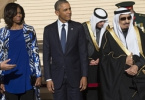TEN REASONS WHY CHINA WILL HAVE TROUBLE FIGHTING A MODERN WAR
February 18, 2015 · in Commentary
The introduction of new weapons and platforms into the People’s Liberation Army (PLA) has captured the attention of much of the world for well over a decade. However, new equipment is only one element of the PLA’s long-term, multi-dimensional modernization process. There is much to be done and no one understands this better than the Chinese themselves. Based on what PLA commanders and staff officers write in their internal newspapers and journals, the force faces a multitude of challenges in order to close the perceived gaps between its capabilities and those of advanced militaries.
New weapons, increasing defense budgets, and recently corruption tend to generate headlines in the Western press, but at least 10 other factors raise serious questions about the PLA’s current ability to fight a modern war against an advanced enemy (some of which are discussed in a new RAND report, to which I contributed a collection of sources):
1. Shared Command Responsibility
From company level to the PLA’s highest headquarters, commanding officers share responsibility for their units’ actions with political officers who are responsible for “political work,” which involves insuring the PLA’s loyalty to the party through ideological training, officer promotions, the prosecution of the “three warfares” of psychological, media, and legal war, and maintaining morale and discipline. In the eyes of Western military officers, this situation violates the principle of war of “unity of command,” in which “all force operate under a single commander.” A major training trend over the past decade has been to improve political officers’ tactical proficiencies in the military tasks their units must conduct. In theory, commanders alone are authorized to make immediate tactical and operational decisions when necessary. However, at times there may be friction between commanders and their political counterparts. That situation may be exacerbated if corruption has permeated down to operational unit commanders and political officers. This shared responsibility system may suffice in peacetime situations, but it has not been tested under the stress of fast-moving, modern combat operations.
2. Army-Dominated Chain of Command and Force Structure
Despite Beijing’s declaration that “China is a major maritime as well as land country,” the PLA’s force structure and leadership continue to be dominated by the Army. Based on numbers provided by the Chinese government, the Army (including the independent branch of the Second Artillery, the PLA’s nuclear and conventional missile force) comprises over 72 percent of the 2.3 million active duty force, with about 10 percent in the Navy and 17 percent in the Air Force. In mid-2014, China’s Army had 24 full generals (who wear three stars), the Navy had three full admirals, and the Air Force five. Currently, in the Central Military Commission (the highest military command and policy organization), the Army occupies six of the 10 seats for senior military leaders, while the Air Force has two, and the Navy and Second Artillery one each. These numbers may vary slightly over time, but the vast majority of the PLA’s senior leadership still wears green. Only Army officers have commanded the PLA’s seven military regions. Though China recognizes threats from the maritime direction have increased and its future campaigns will most likely have major naval or aerospace components, it has yet to modify its command structure to prepare for these realities. Changes to the PLA’s size, structure, and joint operations command system were announced in November 2013, but the details have yet to be revealed. Whatever changes are proposed, it is likely they will take several years to implement and trouble-shoot, likely causing disruptions and discontent along the way for those people and organizations who lose power and authority in these bureaucratic struggles.
3. Too Many Non-Combatant Headquarters
Of the approximately 1.6 million personnel in the Army, 850,000 are assigned to the 18 group armies and a number of independent combat divisions and brigades, which comprise the Army’s main combat force. This means that roughly 750,000 Army personnel are found in local force units (mainly static border defense units), logistics units, schools and training bases, and an extensive system of provincial military district, military subdistrict, and county-level people’s armed forces departmentheadquarters. These local headquarters are under the dual leadership of the PLA and the local civilian governments at the same level and oversee reserve and militia units and are responsible for conscription/enlistment, demobilization, and wartime mobilization. They were created decades ago when China’s transportation and communication infrastructure was underdeveloped and it was necessary to have military representatives physically present at every level of local governments. Currently tens of thousands of field grade officers are assigned to these headquarters. Because of improvements in China’s transportation and communication systems it may no longer be necessary for so many non-combatants to be stationed throughout the country. A significant reorganization and decrease in these local headquarters could help reduce the size of the PLA and, perhaps just as importantly, reduce the number of mid-level and lower-level officers tempted by opportunities for graft and corruption. Such a reorganization would likely face opposition from those who would lose their relatively cushy rear area jobs in the process.
4. Inexperienced Commanders and StaffAs the PLA has experimented with conducting combined arms operations at battalion level over the past decade it has learned that current regulations do not provide for enough personnel at battalion headquarters to adequately command and control supporting units, such as artillery and engineer units, assigned to reinforce infantry or armored battalions. Therefore, units throughout the PLA are attempting to find solutions to the problem by assigning officers or noncommissioned officers (NCOs) to assist the battalion commander in his operational duties. Increasing the size of the staff is necessary before the reinforced, combined arms battalion can become the “basic tactical unit” in the Army capable of executing independent operations as envisioned in many PLA writings.
Pages: 1 2 Single Page




Ah, to be a continental power. The extensive use of fiber-line ground-based networks would allow the PLA to leverage an information and bandwidth-heavy C4ISR infrastructure, ill-suited to over the year deployment to expeditionary units. The PLA will have to tread carefully to balance bandwidth and information. But commanders’ demand for information and the call for greater “informatization” together with a lack of restrictions on domestic bandwidth makes this an unlikely scenario. Information dependence breeds information dependence.
The command and bureaucratic system in China is antiquated and too entrenched in the Army and too rife with organizational infighting. Furthermore, officers tend to stay within the same organization over years and years and years, allowing for an insular culture where loyalty is felt more toward a command than a service or national military. Rotating personnel out would help to solve this. In any case, service infighting causes issues for mobilization and force deployment. Goldwater-Nichols solved this by creating the COCOMs. Although a Chinese reorg has been talked about for years, so far nothing has been done. The Military Region System and the Services themselves are too invested at the moment in the rivalry and “command kingdoms” the status quo engenders.
How sexy a topic, right? Nothing gets people more interested than discussing management. At this time the NCO corps is regionally managed or command-managed, but there is no centralized structure or billeting system similar to the AFSC, MOS, or NEC system that the US air force, army/marines, and Navy have (respectively). The key here is that these centrally management communities strategically shape forces and their technical ability to meet national, service, and command requirements. Without oversight the PLA will have serious issues in shaping its force effectively, creating incentives for enlisted longevity, reducing the technical burden on officers, and trying to become an effective, modern force. One of the greatest tools of the US Military (and often the greatest source of consternation) is the manpower and resources it places into enlisted and officer community management programs.
Agree with #10. Few nations have as much recent combat experience as do the US and its allies from the Iraq and Afghanistan conflicts.